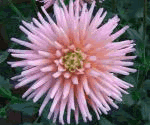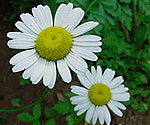
Daffodil
The official botanical name of the daffodil is Narcissus. Daffodil is accepted as a common name for all members of the Narcissus genus. Jonquil is a “species name” within the Narcissus genus that has multiple smaller flowers on each stem.
The name narcissus is derived from the Greek myth about Narcissus, the handsome youth who was granted his good looks by the Gods. His beauty was permanent and he was immortal, as long as he never viewed his own reflection.
One day, when Narcissus was hunting in the woods, a nubile wood nymph named Echo saw him and fell in love, but Narcissus rejected her. Echo was so devastated by his rejection that she hid in cave and died. The goddess, Nemesis, heard about poor Echo, and lured Narcissus to a shimmering lake. There in his vain state, he was unable to resist gazing at his own reflection, and fell in love with himself! As he gazed, the divine penalty took effect, and he simply faded away. In his place sprang up the golden flower that bears his name today.
All daffodils have a central trumpet-shaped corona surrounded by a ring of petals. The traditional daffodil has a golden yellow colour all over, but the corona may often feature a contrasting colour. Breeders have developed some daffodils with a double or triple row of petals, making them resemble a small golden ball. Other cultivars have frilled petals, or an elongated or compressed central corona.
Daffodils are grown around the world, from their native habitats in Spain, Portugal, France and Morocco, across the Mediterranean into Greece, to gardens in Alaska and Australia.
Daffodils are grown from bulbs and are one of the most popular spring-blooming flowers
Poets often write about daffodils and William Wordsworth, the legendary British poet wrote of the flowers in his classic poem, “Daffodils”, published in 1804. This is the poem that so artfully describes the poet viewing “ten thousand” daffodils beside a lake, and is also the source of the phrase, “Dancing with Daffodils.”

Dahlia
Dahlia, in botanical terms, is a Mexican genus of perennial garden composites with large brightly coloured flowers and tuberous roots. The name of this flower or plant originates from the name of the Swedish botanist Andreas Daul (1751-89). The flower, available in an assorted range of colours is a gardener’s favourite, and is popularly attached with notions of dignity, elegance and good taste.

Daisy
The daisy, though a very common star-shaped flower, has inspired many a poetic verse. The wild Daisy- Bellis perennis is a special way of asking,“Do you love me?” formerly, this form of daisy was believe to have curative powers and was called ‘Bruisewort’. According to some critics, the generic name is derived from the Latin bellus that is, pretty and charming, though others say its name is from a dryad named Belidis.
The common name is a derivation of the old English name ‘day’s-eye’ and is applied by Chaucer in that sense:
‘Well by reason men it call maie
The Daisie, or else the Eye of the Daie.’
The term ‘daisy’ is a general term of admiration, often ironically used. “Fresh as a daisy” shows brilliance and vitality. There is a common proverb associated with the flower and its abundance in spring and early summer: ‘When you can put your foot on seven daisies summer is come’.
Daisy stands for romance, a loyal love as well as gentleness, innocence and purity. A single daisy (Bellis simplex) suggests innocence, while the double daisy (Bellis hortensis) shows affection.

Dandelion
In the wide expanse of different hues and shades in the flower world, a dandelion uniquely stands out due to its unusual name. ‘Dandelion’ is the English form of the French term, which means a lion’s tooth. A plant of the genus Taraxacum of the family Asteraceae, perennial herbs of wide distribution in temperate regions, the dandelion has a rosette of deep-toothed leaves (the name is usually ascribed to this) and a bright yellow flower followed in fruit by a round head of white down, an adaptation for wind distribution of the seed like fruits.
Formerly this blossom expressed the virtuous idea of loyalty and faithfulness. However, in the Victorian period, when flowers were prescribed new meanings, the dandelion stood for love’s oracle and even coquetry. In dream interpretation, this was extended more, such that a dream of this flower was taken to be a sign of misfortune, presence of enemies and deceit on the part of loved ones. The Russian dandelion (T. kok–saghyz) has been cultivated for the milky juice typical of the genus, as a source of rubber. Dandelions are classified in the division Magnoliophyta, of the class Magnoliopsida, and order Asterales.
